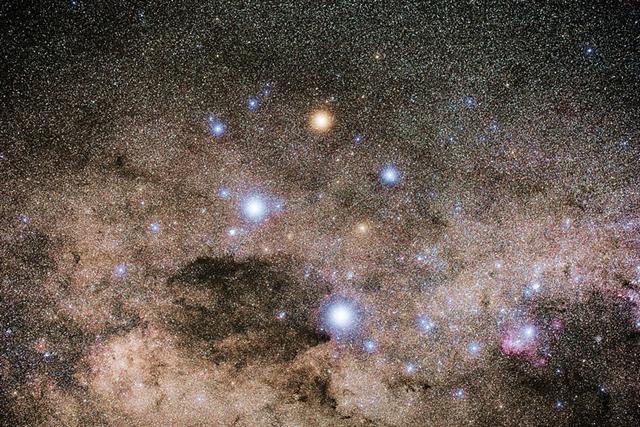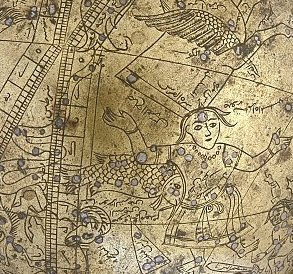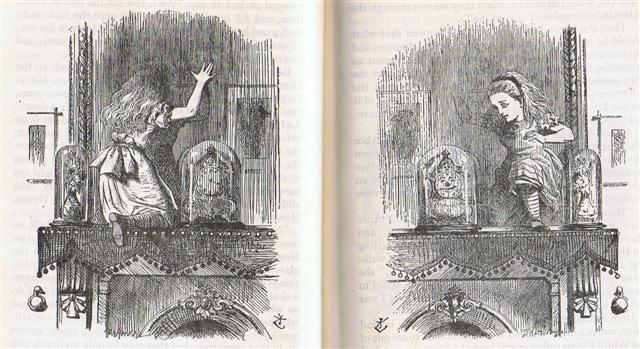Once again. I have suggested the natural point for a beginning of the C text ought to have been where the Sun reached Acrux at the bottom of the Southern Cross (†): ... Whittier said, in his Cry of a Lost Soul: 'The Cross of pardon lights the tropic skies'; which is correct for our day, as it is not now entirely visible above 27º 30' of north latitude. It was last seen on the horizon of Jerusalem - 31º 46' 45'' - about the time that Christ was crucified. But 3000 years previously all its stars were 7º above the horizon of the savages along the shores of the Baltic Sea, in latitude 52º 30' ... Von Humboldt adds: The two great stars, which marks the summit and the foot of the Cross, having nearly the same right ascension, it follows that the constellation is almost perpendicular at the moment when it passes the meridian. This circumstance is known to the people of every nation situated beyond the Tropics or in the southern hemisphere. It has been observed at what hour of the night, in different seasons, the Cross is erect or inclined. It is a time piece, which advances very regularly nearly four minutes a day, and no other group of stars affords to the naked eye an observation of time so easily made. How often have we heard our guides exclaim in the savannahs of Venezuela and in the desert extending from Lima to Truxillo, 'Midnight is past, the Cross begins to bend' ...
In the year 1582 A.D. Acrux was close to the Full Moon in °March 21, which might have influenced the Pope Gregory XIII when he decided this date should be spring equinox, rather than °March 20 which would have been more satisfying for the astronomers: ... Ecclesiastically, the equinox is reckoned to be on 21 March (even though the equinox occurs, astronomically speaking, on 20 March in most years) ...
At my assumed baseline year for rongorongo, 1842 A.D., precession had carried the stars about 4 days ahead in the Gregorian calendar and therefore Acrux was no longer at the Full Moon in day 80 but in March 25 (84) - which happened to coincide with the date for spring equinox in the previous Julian calendar: ... When Julius Caesar established his calendar in 45 BC he set March 25 as the spring equinox. Since a Julian year (365.25 days) is slightly longer than an actual year the calendar drifted with respect to the equinox, such that the equinox was occurring on about 21 March in AD 300 and by AD 1500 it had reached 11 March. This drift induced Pope Gregory XIII to create a modern Gregorian calendar. The Pope wanted to restore the edicts concerning the date of Easter of the Council of Nicaea of AD 325 ... At the time of rongorongo it was no longer Acrux but Alchita in the Raven constellation which was at the Full Moon when the Sun reached March 21. And also the right ascension place for 0h had moved backwards in time with 4 days to the Rear Spout, below the wings of Pegasus and at the topknot of Andromeda:
The name for α Andromeda, Sirrah = the Navel of the Horse (Al Surrat al Faras), could have inspired the Chinese to name a star (δ Centauri) at the opposite side of the sky Ma Wei = the Tail of the Horse. Or it could have been the other way around with the Arabs borrowing the idea from the Chinese (or from some other common source). Anyhow it was clear that 183 right ascension days covered half the cycle of right ascension days, half 366. ... You are the child of my old age. When I had you, no one knew, and what you have been saying is the truth. Well, as you were formed out of my topknot you can be Maui tikitiki a Taranga. So that became his name, meaning Maui-formed-in-the-topknot-of-Taranga. And this is very strange, because women in those days did not have topknots. The topknot was the most sacred part of a person, and only men had them ... The method to add 4 glyphs (days) in order to update the positions of the stars in the Gregorian calendar was evidently used also at the beginning of the text on side a of the G tablet, although here the creator of the tablet had positioned heliacal Aldebaran at 0h (at the time of the Bull) - instead of nakshatra Acrux at the time of Gregory XIII. The beginning of side a on the G tablet was at 0h instead of half a year away from 0h as on the C tablet:
When anciently the Bull (Taurus) had risen together with the Sun at 0h (i.e. 64 + 4 = 68 right ascension days earlier than at the time of rongorongo), then the Scorpion with its curved tail would have been sinking down at the horizon in the west.
... Once upon a time Aldebaran would have served as the leader (leading star) at the beginning of the northern Sun season with Antares arriving at the beginning of the opposite half of the year. But south of the equator Antares (Ana-mua, the 'star pillar in front') was at the beginning of the Sun season with Aldebaran (Ana-muri, the star pillar at the rear) arriving at the end of summer. This was known by the Polynesians. The beginning of side a was at May 24, day 144 (= 12 * 12) counted from January 1, and this was in the season when the Sun was present north of the equator ... Antares in the Scorpion was both at the end of the northern summer and at the beginning of the southern summer.
|









